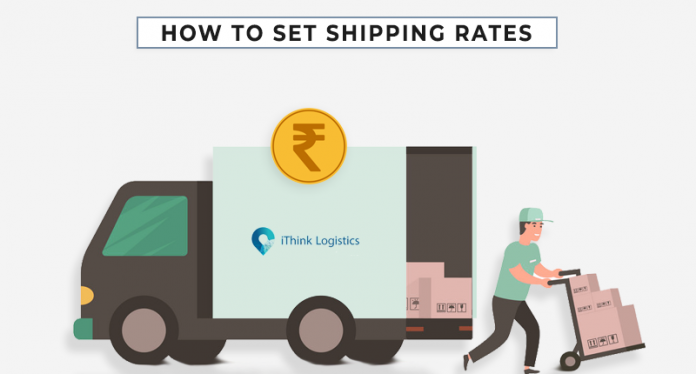If you are into an online business, then it can be difficult to determine accurate ways of charging the shipping costs from your clients. This can be tricky because the ample amount of eCommerce stores that are available do not provide that element of consistency. Some questions are bound to cross your paths i.e. whether you should offer free shipping to your customers or whether you should charge the shipping rates based on the weight of the items and lastly will you be capable enough to maintain the profit margins.
These are the most common questions that bother all online business holders. In this content, we will highlight the common problems faced by online retailers and their consecutive solutions. The shipping rates that you offer will depend on the type of industry you are working in, the type of items you are delivering, and the estimated sales value of this item.
Before getting into the problems, we need to highlight how you should determine your shipping cost.
Determining the shipping costs
You must estimate and calculate your shipping cost before you set the shipping prices that you will be charging your customers. This is how you can determine the shipping costs:
Handling
The first and foremost thing that you need to assess is the average time needed for you to pack an item that you want to sell. This process will be easier if you calculate considering less number of items. You need to identify the exact number that is required for packing a single item and then divide those numbers by 60. As you get the number, multiply it with the hourly rate that you might consider paying your employees. If you do not have employees for measuring the same, you can consider the minimum rate that you will consider paying.
Packaging
After handling, you need to identify the average amount required for arranging the materials needed for packaging like the tapes, boxes, cushioning items, and many more. You should always have the exact numbers while determining the amount you need for packing a single item. Nevertheless, if you are selling fewer items you can precisely consider $1 for your packaging.
Postage
After the packaging requirements are fulfilled, you need to move on to the postage requirements. Here you need to calculate the average package weights and dynamics. Then place the same numbers in a shipping calculator for assessing various locations where you might carry out your shipments. If most of your clients will be in India, then test out different locations in India to identify the average cost required.
After you get all three of your numbers and then add them up to determine your final cost excluding the fees and taxes. You will have the average shipping cost according to each order and then you can finally set the shipping rates for your online business.
Shipping solutions
There are mainly are several ways in which you can manage the shipping rates of your company. However, we’ll be discussing the foremost common solutions:
Free shipping
In this shipping, you deliberately get hold of the shipping and don’t truly charge your customers for the delivery.
Flat-rate shipping
In this shipping method, you set one rate for each order no matter the load, quantity, or size.
Price-based shipping
In this method, you set the shipping rates in line with the full cart price. This shipping system is typically framed into a tired system. Here the shipping worth ought to be supported by the full cart price of the things purchased. The price will fluctuate concerning items that are being added. However, the tiers can continuously be outlined by the worth of the item.
Weight-based shipping
In this shipping process, you set the shipping price of a particular item ordered according to its weight and dimensions.
Real-time rate calculators for shipping
The shipping cost is calculated in real-time via specific shipping carriers like UPS, FedEx, etc.
Sometimes you can consider combining any of the options mentioned above. For example, you might offer free shipping on items that are above $100 but charge an extra weight-based amount for orders that are less than that.
Calculating the average shipping value for your products
The initial step is to work out a variety which will be a possible shipping rates for every one of your products. You need to choose an appropriate carrier and you need to set the dynamics of the product that you are going to be shipping across. This may appear tiresome work, but you cannot avoid it in any doable manner. You have to do this when you ship a product.
After you are done figuring out the weight and size of your product, go to your carrier’s website and log the destination zip code of the areas. Be sure to select both the rural and urban locations. Your carrier might charge more for the rural areas even though they are geographically much closer. After getting into the Nitti gritty of it, you will understand the trend. Then it will be easier for you to determine what your average shipping cost will be for each product.
Calculated v/s Flat rate
A flat rate means charging the shipping rate that has been pre-set whether it is free shipping that is being offered or the shipping rate that is charged for all the orders that are placed. Calculating shipping is different from the flat rate. It is not decided or set for beforehand. It is set considering different variables such as the weight and dimensions of the item, the total price of the item, and the destination where the item is to be delivered.
There are advantages and limitations to both rates. There have been several types of research and assessment on which of the rates are better when it comes to the whole profit margins of the company. It has been found that the calculated shipping rate is better when it comes to increasing cart abandonment.
When the customers are shopping on your online site they tend to make two consecutive decisions- whether they want the products or items that you are selling on your site, two whether they are willing to pay the price that you are offering on that particular product. These are the two major decisions that you need to go through. You have to be very tricky in such a situation because for every extra decision you ask your customers to make; you will lose one significant amount of them. For instance, while your customers are checking out and they see a shipping rate that is been charged for the item, they will tend to think again about whether they are willing to pay the shipping charges and whether the other stores will charge them with the same or less amount. These last-minute decisions can make you lose customers.
Mostly big retail companies do not charge the exact amount that is required for the shipping, so the customers never have an actual idea of the shipping rates. Many retailers tend to offer free and discounted shipping rates and therefore customers always expect to get some kind of discount every time they shop. This is a great strategy because the retailers that are offering such discounts are not losing the money instead they are recouping the amount from elsewhere. Maybe they are increasing their profit margins by increasing the product’s sales price or they have realized that offering free shipping has increased their sales and they are making huge profits in the sales volume.
“One size fits” all solution
It is essential to mention there is no such solution that will be fit for any shipping rate problem that you might face in your company. If you are in a small company and you are dealing with a small base audience, then it is advised that you look at what your largest competitors are doing. Then test out each shipping rate to find the one rate that suits your company and balance out the profit margins of your firm.
However, most online retailers should their shipping rate to $5. This seems to be a safe spot for the shipping rates. Any amount less than that will not bring you any profit and even additional sales would be worthless. Moreover, any amount higher than $5 will drive your customers away and they will search for other alternative platforms for shopping.
Conclusion
The most successful online eCommerce stores have tested various shipping rates and have selected the right shipping rate that suits best their company. If you are a beginner in the industry, it is advised that you should start at a safe margin by offering a $5 shipping charge per order. However, do not settle on the price rate. Use your inbuilt testing feature for testing various price structure that is suited for your store and works best when it comes to balancing out the profit margins.









